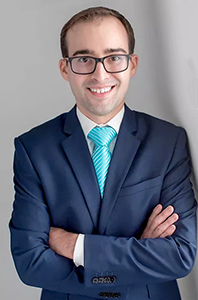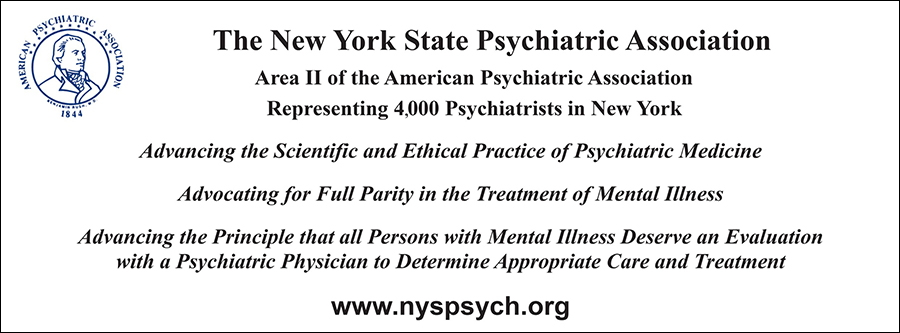New York State has undertaken significant new efforts in 2022 to continue building a comprehensive crisis response system to help meet the needs of New Yorkers living with a mental illness and their families, including launch of the 988 crisis line and establishment of supportive and intensive crisis stabilization centers.

Jamie Papapetros
The National Suicide Hotline Designation Act was enacted on October 17, 2020 and transformed the ten-digit National Suicide Prevention Lifeline/Veterans Crisis Line number 800-273-8255 administered by Vibrant Emotional Health, into the three-digit number, 988.1 This law was enacted in response to an order from the Federal Communications Commission designating 988 as the National Suicide Prevention Lifeline and Veterans Crisis Line, which “required all telecommunications carriers, interconnected voice over Internet Protocol (VoIP) providers, and one-way VoIP providers to make any network changes necessary to ensure that users can dial 988 to reach the Lifeline by July 16, 2022.”2
New York passed enabling legislation in 2021 and 2022 requiring the Office of Mental Health (OMH) and the Office of Addiction Services and Supports (OASAS) to prepare an implementation plan outlining the resources that would be necessary to make sure the 988 hotline system would be “…available, operational and effective across New York State.” OMH and OASAS maintain oversight of the hotline in concert with the National Suicide Prevention Lifeline (NSPL). An implementation plan was released by the two agencies in February 2022 and the historic moment was noted as follows, “The implementation of 988 is a watershed moment in the history of crisis and behavioral health care in the United States. It presents an opportunity to reach millions in emotional distress while de-stigmatizing help-seeking. New York State has an opportunity to be a national leader in coordinated crisis services during this pivotal point in time.”3 The report identified eight priority areas:
- 24/7 statewide coverage by designated National Suicide Prevention Centers;
- strategies for identifying and supporting funding streams to meet the projected increase in volume;
- mechanisms related to increasing and sustaining capacity for call, chat, text, and follow-up at the centers, including workforce capacity building and training;
- operational, clinical and performance standards, including identifying reporting metrics on usage, services, and impact for all Lifeline Call Centers;
- multi-stakeholder input through a 988 implementation coalition;
- systems to maintain local resource and referral listings, as well as assure linkages to local community crisis services;
- follow-up services for individuals who contact 988 through call, text and chat based on Lifeline best practices and guidelines; and
- public messaging at the state level to distinguish from 911 and educate the public on the range of 988 services which shall include public messaging and underserved and high-risk populations.4
The launch of 988 in New York has been supported by a $10 million one-time federal mental health block grant, a $7.2 million two-year SAMHSA grant and $35 million in the enacted in 2022-23 New York State budget annualized to $60 million starting in fiscal year 2024.
When an individual dials or texts 988, they will be routed to a local lifeline crisis center based on the caller’s area code or IP address, if initiating contact via chat. Despite the method of contact, the individual will be connected with a trained crisis counselor who will listen, provide support, share resources and offer follow-up services. In the event the local crisis center is unable to receive the call, it will be rerouted to the national backup crisis center. As of February 2022, New York had established 12 NSPL centers which are accredited either through the American Association of Suicidology or the International Council for Helplines. The funding was used in part to launch NSPL centers in the 11 counties of New York State that did not already have in-state NSPL coverage through Vibrant Emotional Health and Mental Health Association of Essex for counties in the North Country. According to the August 988 Updates and Education Newsletter report, New York has achieved 24/7 in-state coverage for all 62 counties.
OMH recently released data from its contact centers for August 2021 compared to August 2022. In August 2021, the call centers routed and received 11,565 calls with 7,629 answered in-state (66%) with 32 seconds as the average answering speed. In contrast, in August 2022, 16,964 calls were routed and 16,059 received with 13,230 answered in-state (82%) with 27 seconds as the average answering speed. New York’s crisis contact centers responded to 100% of chats and text during the months of July and August 2022. On a national level, SAMSHA reports that, based on 9,360 average daily contacts, approximately 98% of individuals who contact 988 are helped by a crisis counselor without the involvement of 911, 1% those who contact 988 agree to have a counselor call 911 because of serious risk to life and fewer than 1% require a call to 911 without consent because of serious risk to life.5 For more information visit: https://omh.ny.gov/omhweb/crisis/988.html.
The mission of the comprehensive crisis response system envisioned by OMH is summarized as “someone to call” (988), “someone to come” (crisis mobile teams) and “somewhere to go” (crisis residences and crisis stabilization centers). A September 2022 update from OMH noted mobile crisis services are in 50 of New York’s 62 counties with intent to expand to all counties so there is 24/7/365 coverage.6 The Crisis Stabilization Centers are being developed under the oversight and authority of OMH and OASAS under two models: (1) supportive crisis stabilization centers and (2) intensive crisis stabilization centers. These centers will provide observation, evaluation, care, and treatment on a 24/7 basis. Pursuant to agency guidance and regulations, supportive crisis stabilization centers are “services are for recipients experiencing challenges in daily life that do not pose the likelihood of serious harm to self or others. Such challenges may also create risk for an escalation of behavioral health symptoms that cannot reasonably be managed in the recipient’s home and/or community environment without on-site supports.” On the other hand, intensive crisis stabilization centers provide “urgent response and/or treatment services to recipients experiencing an acute mental health and/or substance use crisis . . . including rapid access to services for acute symptoms, assisting in diversion from a higher level of care, and prescribing or administering medications to manage substance use and mental health symptoms.”7
Supported by up to $75 million in funding, OMH and OASAS announced awards this summer to create nine intense crisis stabilization centers in the following regions: New York City, Long Island, Mid-Hudson, Finger Lakes, Western, NY, Southern Tier, Central NY, North Country and Mohawk Valley. OMH and OASAS have issued RFPs to create three additional centers, two in New York City and one in the Capital Region.8 The development of the supportive crisis stabilization centers is currently in the procurement phase.
Another program that continues to be key for individuals and families is the Community Health Access to Addiction and Mental Healthcare Project (CHAMP), which provides ombudsman services to help to individuals and providers with health insurance coverage rights, issues, concerns, and complaints. CHAMP is administered by the Community Services Society in partnership with the Legal Action Center, NYS Council for Community Behavioral Healthcare, and Medicare Rights Center. The ombudsman helpline is available Monday-Friday from 9 am to 4 pm at (888) 614-5400. The program is supported by annual funding in the NYS budget. Legislation enacted this year will require the ombudsman to submit an annual report by each October 31st to the Governor and Legislature that summarizes work of the program “and make recommendations to address systemic issues identified during the previous year.” Stakeholders are currently awaiting release of such a report.
2022 has been a consequential year for the advancement of public health policies aimed to help individuals living with a mental health and substance use disorder and their families. In one Canadian study, 35% of respondents said their lives had been affected by their family member’s mental health and 71% who stated their lives were affected provided care to their family member.9 The rates were similar in an October 2022 survey by CNN and Kaiser Family Foundation which found that among those whose family member experience a severe mental health crisis, four in ten said it impacted their own mental health or family relationship, with one in five saying it also impacted the family’s financial situation.10 This national survey also found that 90% of respondents believe there is a mental health crisis in the U.S. with half of adults indicating that they or a family member have experienced a severe mental health crisis, and, furthermore, found 56% had not heard about new 988 hotline. New York has not been immune as DOH’s spring 2022 quarterly Opioid Report found that drug-overdose related deaths increased by 37% between 2019 and 2020 — “an increase in overdose deaths to the highest amount recorded in 2020.”11 988 and crisis stabilization efforts will be an important component in meeting the needs of New Yorkers and reducing or reversing these alarming trends compounded by the effects of the COVID-19 pandemic with a ripple effect for immediate and extended family members.
Jamie Papapetros is Research and Communications Coordinator at New York State Psychiatric Association’s Government Relations Office, in conjunction with Karin Carreau of Carreau Consulting. Mr. Papapetros has a decade of experience in government relations, identifying, tracking and analyzing pertinent legislation, providing legislative and electoral research, memo preparation and in depth legislative and regulatory reports.
References
2. https://www.fcc.gov/document/designating-988-national-suicide-prevention-lifeline-0
3. https://omh.ny.gov/omhweb/statistics/988-report-to-legislature.pdf
4. https://omh.ny.gov/omhweb/statistics/988-report-to-legislature.pdf
5. https://omh.ny.gov/omhweb/bh_services_council/omh-updates-09222022.pdf
6. https://omh.ny.gov/omhweb/bh_services_council/omh-updates-09222022.pdf
7. https://omh.ny.gov/omhweb/bho/docs/crisis_stabilization_center_program_guidance.pdf
9. https://www150.statcan.gc.ca/n1/pub/82-624-x/2015001/article/14214-eng.htm
10. https://www.kff.org/report-section/kff-cnn-mental-health-in-america-survey-findings/
11. https://www.health.ny.gov/press/releases/2022/2022-04-04_qtr_opioid_report.htm







